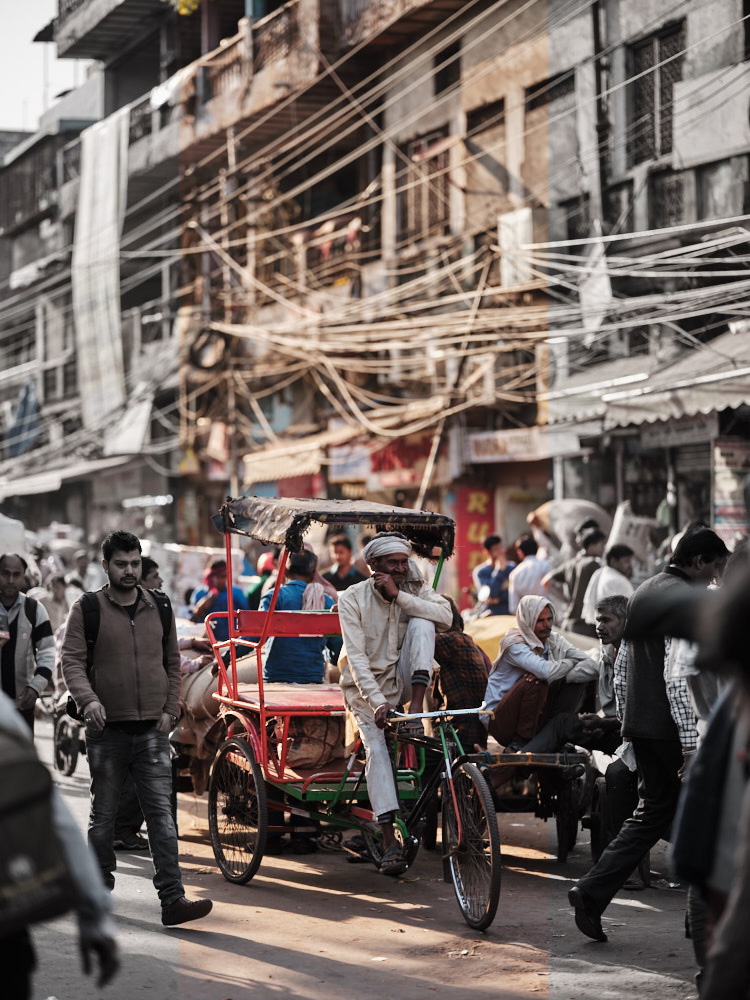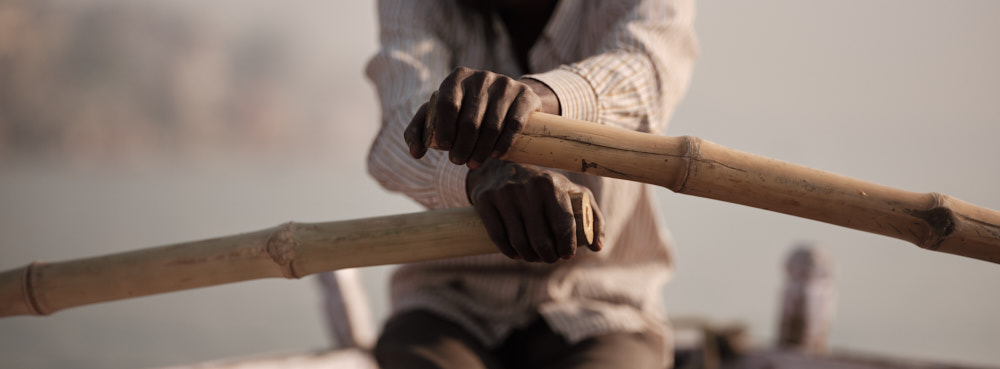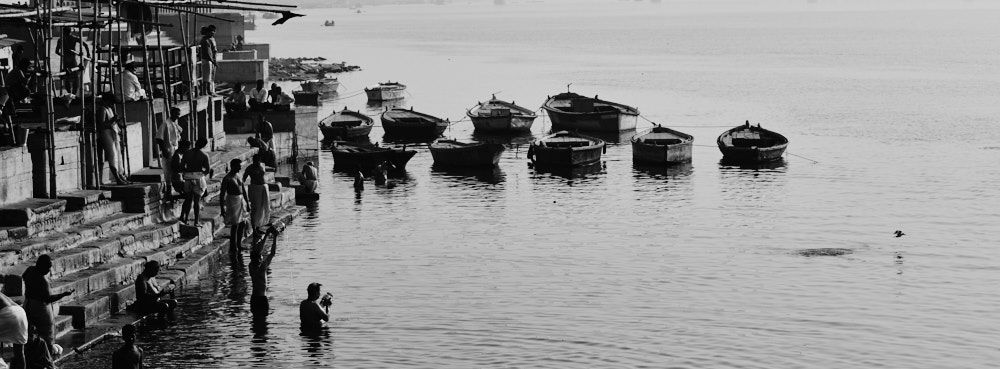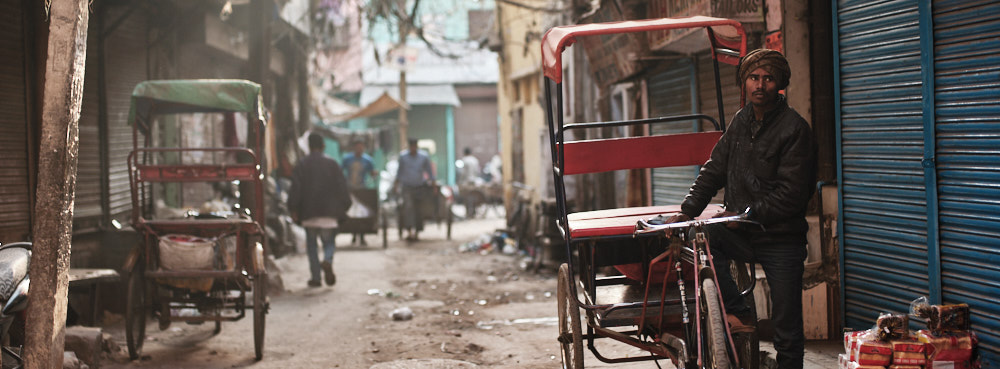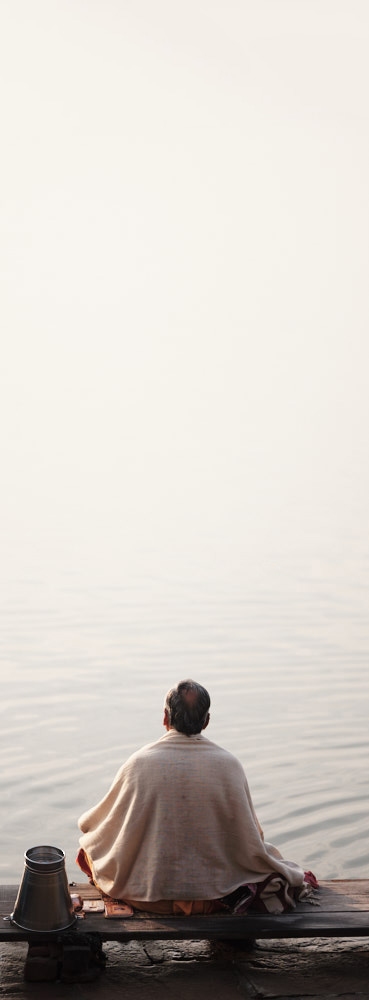The making of photographs is a creative act, and can be an absolutely exhausting one at times. Sometimes, the process of creativity seems to flow endlessly and other times it seems to come to a complete halt. We can find ourselves burnt out and frustrated with our inability to make the images that we want to. One way out of a creative rut like this is to impose a constraint on our creativity so we can refocus our energy one something more positive than our own inability to create.
Burnout
As I write this, I’m sitting in my hotel room in Jodhpur, Rajasthan. It’s been 13 years since I’ve been anywhere near the “triangle” of India and I’d forgotten how overwhelming it can be. There is so much life, so many sounds and smells, and so many small hiccups every day that it can be difficult to focus your energy on making photographs if you’re not careful.
On this trip, I’ve been in India for over a month now working on my Tattoos of Asia project. During that time, I’ve traveled from place to place, heard many stories, and made dozens of portraits for my series. It was after that, when I returned from the mountain villages I’d been living in, that I hit a wall. I walked the gorgeous streets of Old Delhi for a couple of days and barely raised the camera to my eye. I just couldn’t seem to see anything photographically, despite the inputs I was receiving from every angle. Delhi was still Delhi. It wasn’t the world around me that was the problem, it was me.
I realised over that time that I was burnt out and had fallen into a creative rut. Being that my time in India would come to an end soon, I couldn’t just ride the wave and let my creativity begin to surface again. I needed to give it a kick in the proverbial and make some images of this place I love so much. I decided to take the advice I give others so often and run with it. I decided to impose a constraint on my work.
The Constraint
Since this half of this journey is with my wife, I couldn’t really impose a constraint that will require me to spend hours and hours searching out specific subject matter and light. I decided, instead, to impose a technical constraint. I considered working with just one lens or only using slow shutter speeds for creative effect. But those are all things I commonly do anyway, so I didn’t feel like they would take me far enough out of my comfort zone. I have my GFX 50R with me, so I decided to work with the 65:24 crop mode to create some panoramic images. That was something I hadn’t really tried before.
This framing requires me to see the world in a completely different way and sparks new types of images that I may not have even made before. Looking through the viewfinder is also a very different experience from a “normal” 2:3, 4:3, or 4:5 ratio. The long, thin framing forces you to look along the length of your composition in a very different way. Since I only have the GF 110mm f/2 and Mitakon 65mm f/1.4 with me, these panoramic images also force me to keep some distance between myself and the subject I’m working with. My most used focal lengths for day to day travel are usually 16mm and 23mm on the Fujifilm X system, so this is a very detached way for me to work.
But, let’s back up and start with that crop. 65:24 is extremely long and thin. At first, it can be quite difficult to work with, especially for the street/travel style of images I have been creating. Perhaps this crop would be a more natural fit for landscape photographers, but I have found that once you start seeing in this way, it can be great for travel and street work as well. It does require you to consider compositional elements in a different way, though.
When working with this ratio, you need to be careful to look along the whole frame before making your image. It can be easy to focus on your subject and forget the rest of the frame because it is so long. As you begin working with it, I recommend taking your time to really consider the elements you’re adding to the frame and see if they support the story you’re trying to tell. So much can creep in on the edges if you’re not careful.
What Works for the Panoramic 65:24 Crop?
I’ve found that it works quite well when you have strong horizontal lines or a subject that can be supported by things which are surrounding it. It also works well when there are vertical elements which don’t support your composition (like a dull sky, for example). Let’s look at a couple of examples here.
In this first example, I wanted to show the skyline of the Ghats of Varanasi. Unfortunately, we didn’t get any interesting skies during our time there, so the panoramic crop gave a good sense of the interesting parts of the scene without distracting the viewer with too much unsupportive negative space.
In this example, I hope that I have given you enough elements spread horizontally that your eye is able to explore the frame for some time. I waited quite a while and made several frames before being able to settle on an image with various activities for the viewer to explore. The Ghats of Varanasi are quite intense and I wanted to give some sort of representation of that chaos in this image.
Old Delhi is a place that has so much activity at all times that I wanted to show a single character amidst that motion and be able to support that story. By using a shallow depth of field, including plenty of supporting elements spread across the frame horizontally, I feel that mood is conveyed here.
Vertical frames are a little more dificult to make with this crop as very few subjects fit the frame. However, I did enjoy making images of the pilgrims at the river vertically. This allowed me to easily isolate individuals in the crowd and make images that were more peaceful.
What to do with These Long Thin images?
I’ve been thinking quite a bit about what to do with all of these panoramic images I have made. They’re not really fit for digital display, especially not mobile display. They’re just too long and thin to be viewed well on our 16:9 or 16:10 screens. As of now, I’m considering choosing my 10 favourites and making prints for a small, local gallery. I’d love to hear your ideas on what could be done with these images to finish the process of making them.
Climbing out of that Creative Rut
These different ways of expressing the scenes in front of me allowed me to focus on creating a new type of image. There was no need to photograph everything, just the things that would work in the panoramic aspect ratio. By forcing myself to see in a different way, I started to see clearly again. After a week or so of working entirely in panoramic format, I began to see frames that would not work in this format again.
Not only did I pull myself back to the surface and begin creating again by imposing this constraint on myself, I added another tool to my repertoire. There are so many constraints you could work within to spark your creativity when you can’t find flow. As we’ve seen here, a crop works well. You could also make every image at 1/500 or 1/10, you could choose to make every image at f/1.4 or f/8. Perhaps you could work exclusively in Across or Velvia for a time. All of these things will force you to seek out different images and encourage your brain to work in a different way.
What do you do when creativity stops flowing for you? How do you get back into a rhythm of creation? Let us know in the comments below.
Parting Tips and a Suggestion for Fujifilm
Additional crop modes like the 65:24 crop of the GFX series are only available in Fujifilm cameras when you’re working in jpg mode. Thus, you’ll need to be careful with your framing as the reduced resolution may make cropping difficult for you after the fact. This is why I always work in raw+jpg mode. Although you don’t get any more resolution out of the raw file, you’re able to reposition the crop in post-production if your composition was not precise enough or you feel like a different aspect ratio would work better after the fact.
This is where I feel like an improvement could be made to the photography experience in firmware by Fujifilm. When working in these different aspect ratios, the viewfinder gets blacked out except for the current crop. I wish that a mode could be enabled that would allow us to see a reduced opacity (or even monochrome) preview of the portion of the frame not inside that crop. This would be great for seeing things that are entering the frame or even for anticipating what other crops might be possible from a raw file while you’re making the photographs. See the image below for what I mean by this.
